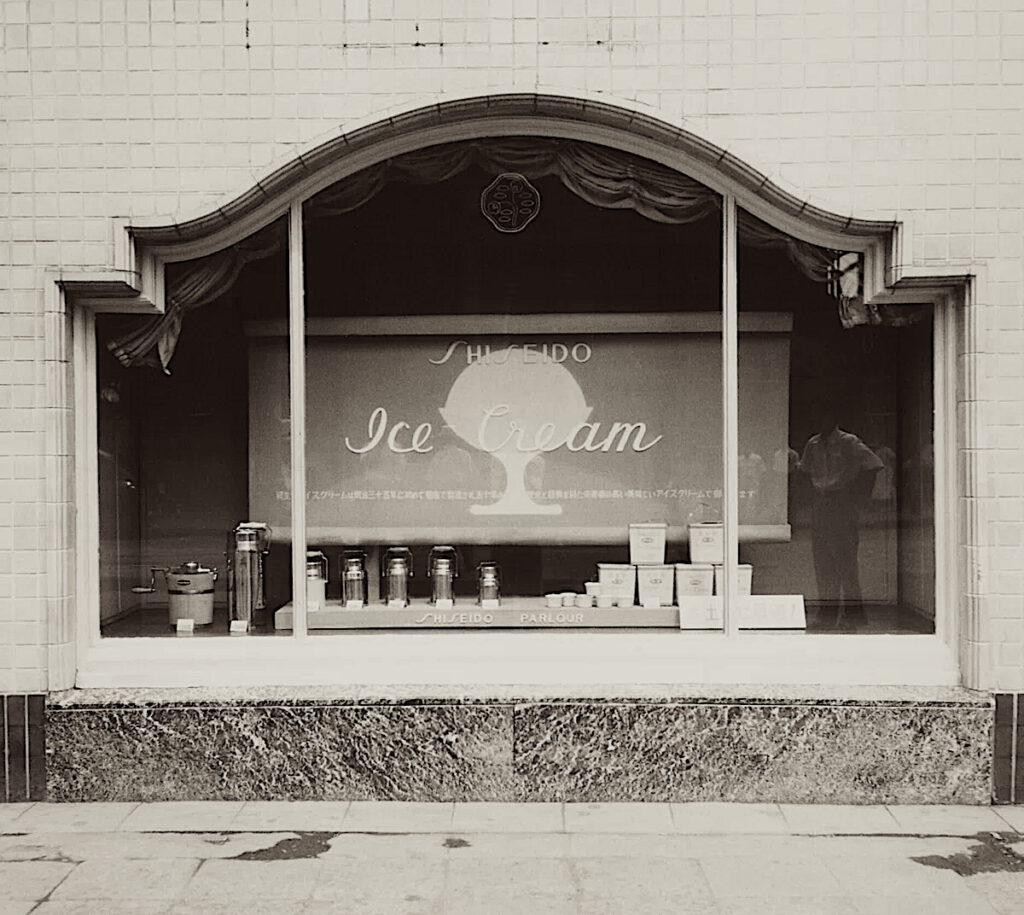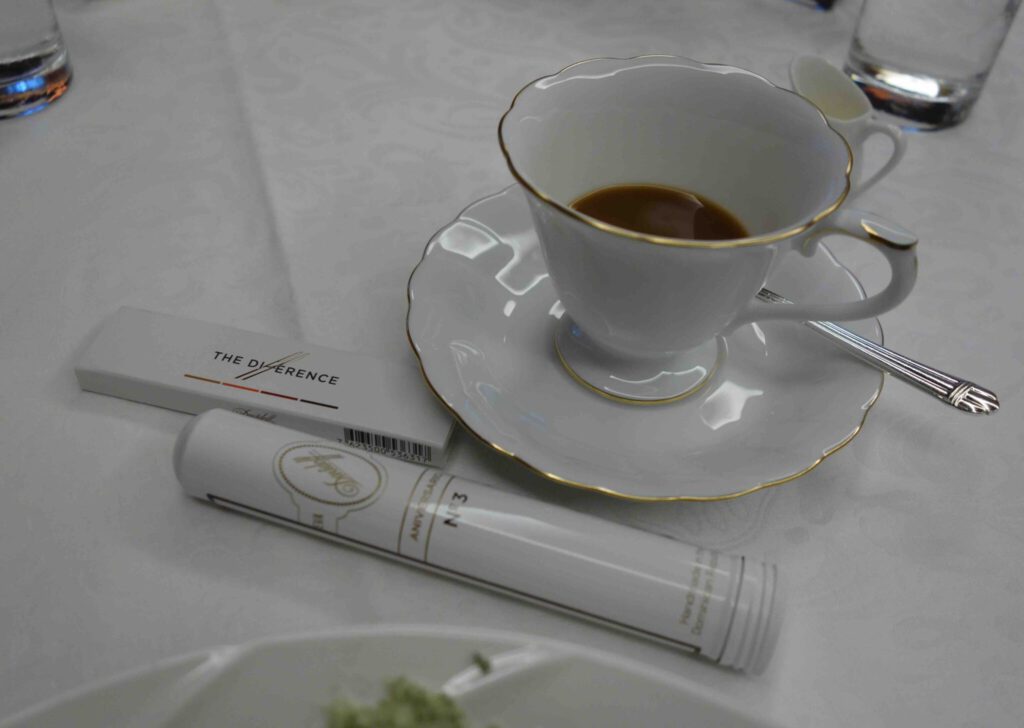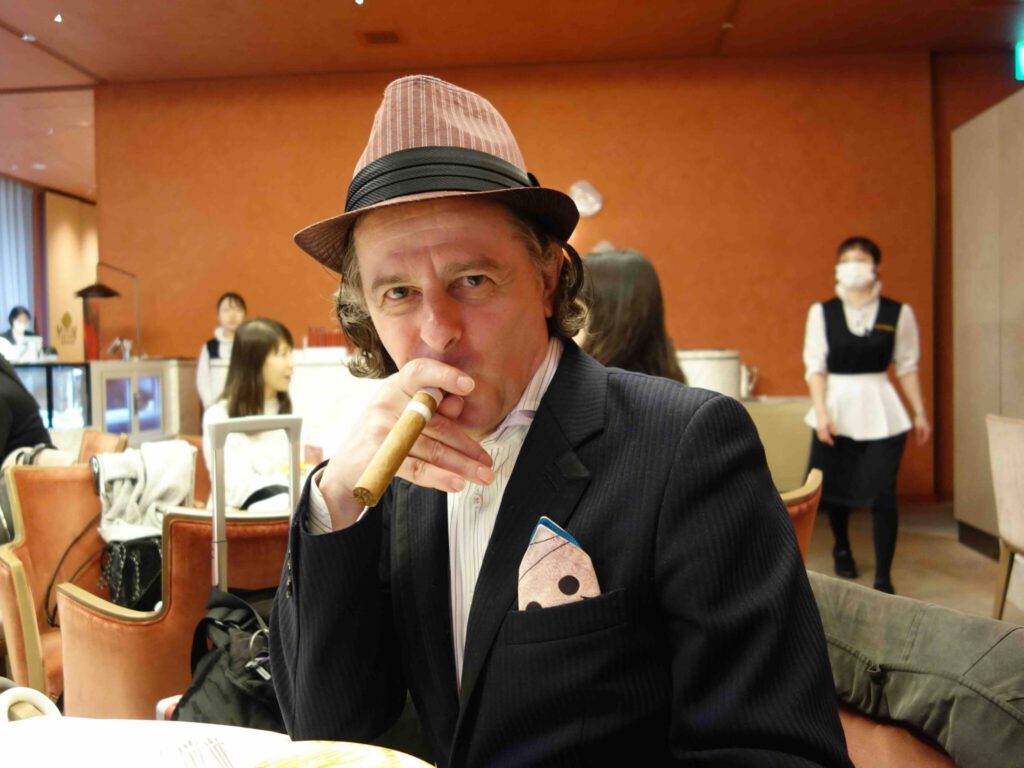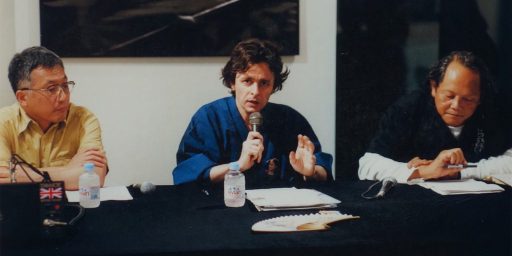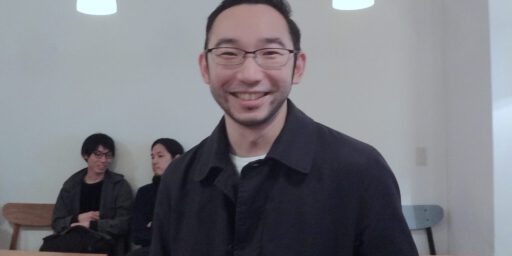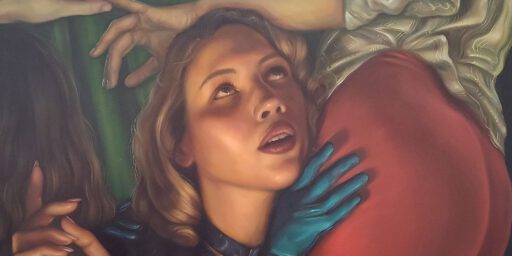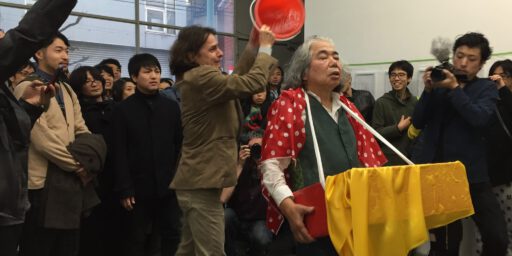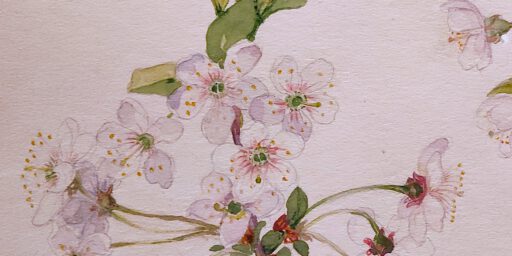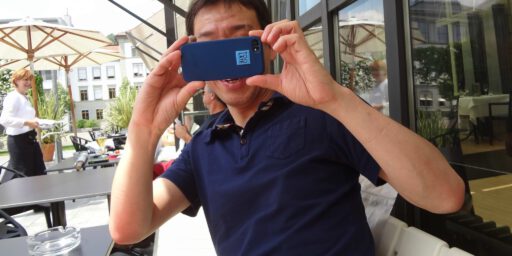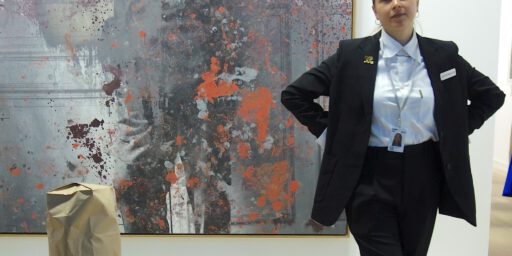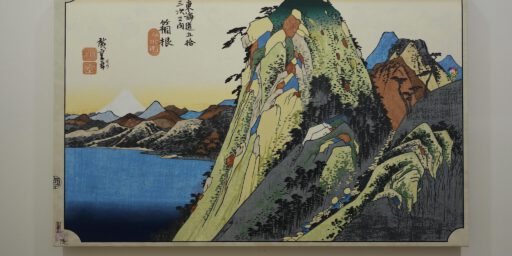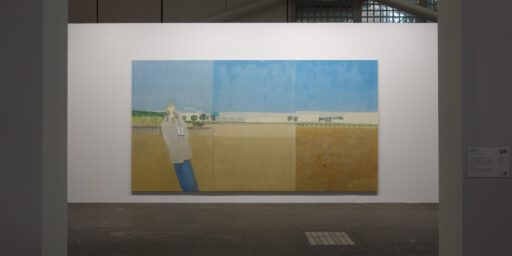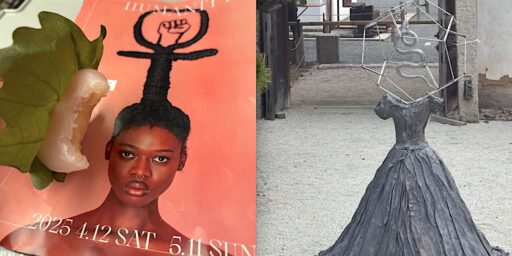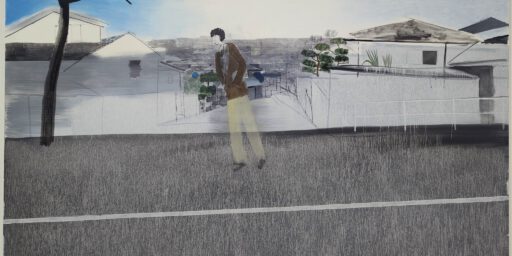「Any girl can be glamorous」すずえり (鈴木 英倫子) 展 @ 資生堂ギャラリー、銀座 "Any girl can be glamorous" suzueri (Elico Suzuki) exhibition @ Shiseido Gallery, Ginza

Shiseido Gallery 資生堂ギャラリー in Ginza. A gallery which belongs to, nowadays globally established, Shiseido 資生堂, a cosmetic company founded in Tokyo. FUKUHARA Arinobu 福原 有信, former head pharmacist to the Imperial Japanese Navy, established the Shiseido Pharmacy in 1872. After a visit to the United States and Europe, Fukuhara added a soda fountain to the store. This later grew into the Shiseido Parlour 資生堂パーラー restaurant business, and eventually led to the introduction of ice cream in Japan (see bonus pics).
Shiseido Gallery has a very good reputation and is famous for its pleasant curatorial surprises. This time, once again, it landed a direct hit by choosing SUZUKI Elico / suzueri 鈴木 英倫子, an artist previously unknown to me. Suzueri installed a body of work that, not only in its methodology but also in its conceptual relevance to the present, accelerates a sense of psychic unrest and inspires reflection. Aggregating a contemporary social commentary of a special kind, indeed.
Suzueri normally creates installations and improvisations using devices that link together pianos and self-made electronic circuits, and seeks to find a surprising narrative in the representation of sound and the communication technology that mediates it.
Focussing on the life of Hedy Lamarr (1914-2000), multifaceted possibilities of artistic approaches and practices opened up for suzueri.
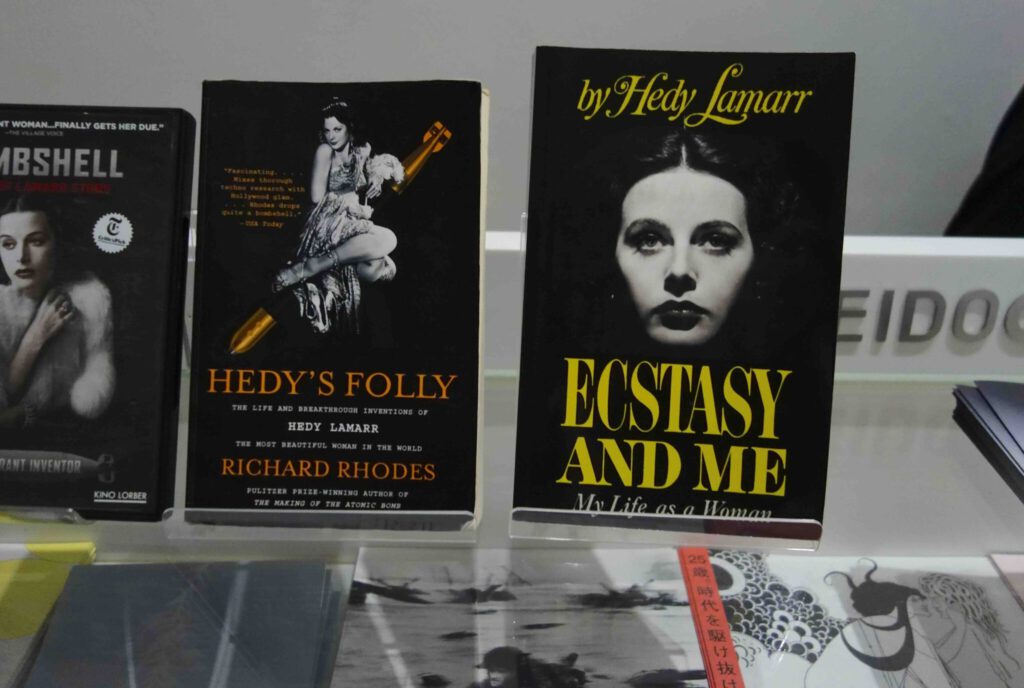
Let’s get an overview about Hedwig Eva Maria Kiesler, later Hedy Lamarr, a glamour girl.
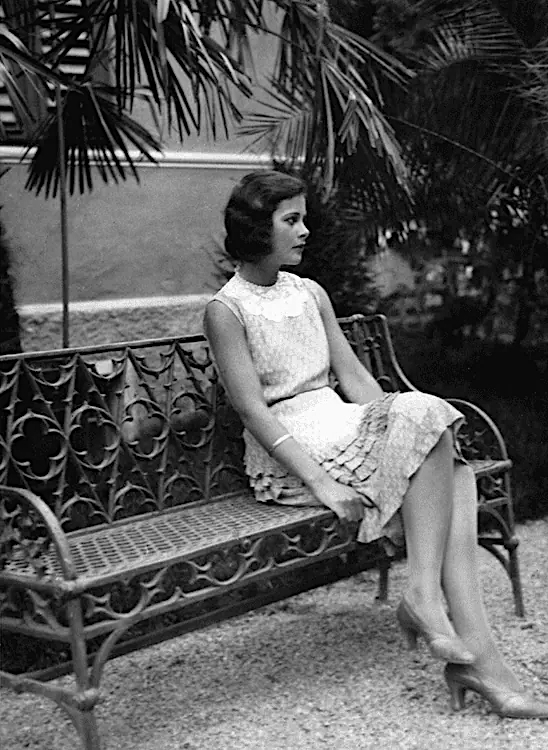

With her nude scenes in the film “Ecstasy,” the actress caused a scandal in 1933 – and quickly became considered one of the most attractive women of all time.
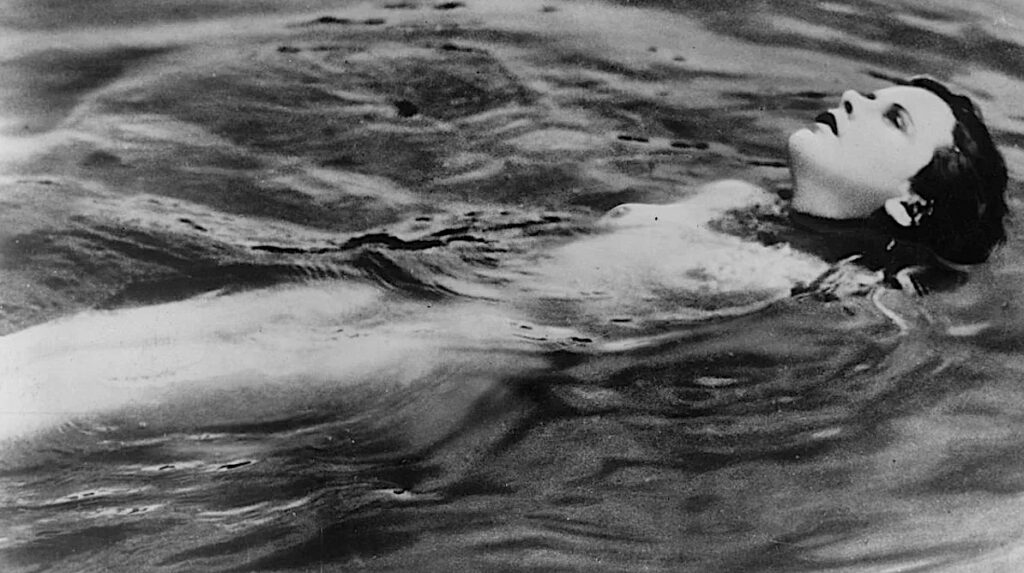
Quote from Vanity Fair, Dec. 7, 2021
“‘Ecstasy and Me’ describes Lamarr’s adolescence as a tumultuous time, filled with the trauma of attempted rape, lurid sexual exploits at boarding school, and an affair with her friend’s father that produced “uncountable” orgasms. It fails to mention, though, that when she was a teenager, she was already learning mechanics, and had become a fearless self-promoter and a protégé of theatrical impresario Max Reinhardt.”
https://www.vanityfair.com/hollywood/2021/12/hedy-lamarr-biography-old-hollywood
What many don’t know: She was also an intelligent inventor. On June 10, 1941, she and composer George Antheil filed a patent for their frequency-hopping “Secret Communication System” – a technology that has become an integral part of our everyday lives.
“Here sat undoubtedly the most beautiful woman on the planet,” George Antheil recalls his first encounter with film diva Hedy Lamarr. “Many movie queens don’t look nearly as good in person as they do on screen, but with this one, it was the other way around.” The composer and the actress met at a dinner hosted by a mutual friend. An encounter with astonishing consequences.
The Austrian possesses not only grace, but also brains. During her marriage to the arms industrialist Fritz Mandl, she learned that many submarine torpedoes are difficult to steer and miss their target. The radio signal is transmitted on only one frequency and can therefore be easily jammed. After leaving Europe behind for a Hollywood career, Hedy Lamarr leads a curious double life: By day, she plays the naive glamour girl, by night, she tinkers with a new remote control system for torpedoes – a contribution to the war against the Nazis.
George Antheil has been experimenting with automatic pianos since his scandalous success “Ballet Mécanique.” Antheil synchronizes the pianos with identical punched cards. If a hole is punched on the paper, the corresponding note is played. When Antheil explains this principle to Lamarr, she is thrilled: This is the missing piece of the puzzle for her torpedo control system! An identical punched card program is supposed to run in the torpedo control system and the transmitter of the guidance signal, synchronizing the constant changes in the radio frequency. Interference-free.
When Lamarr and Antheil filed a patent for this “Secret Communication System” on June 10, 1941, the hoped-for success failed to materialize. The Navy claimed it was too heavy for the torpedoes. Antheil considered this a misunderstanding: “Our mechanism is so small that it fits into any wristwatch. In the patent, we stated that part of the mechanism worked similarly to a pianola. It was undoubtedly our biggest mistake. I can see them saying, ‘My God, we’ll never get a pianola like that into a torpedo!'”
After the end of World War II, frequency hopping technology gathered dust in the military’s drawers. It wasn’t until the mid-1950s that the mechanism was further developed. When the US Army approved it for civilian use in 1981, it wasn’t long before the telecommunications industry recognized its potential. Data transmission on constantly changing frequencies to reduce radio interference – this is now the basis of wireless internet, Bluetooth, and GPS.
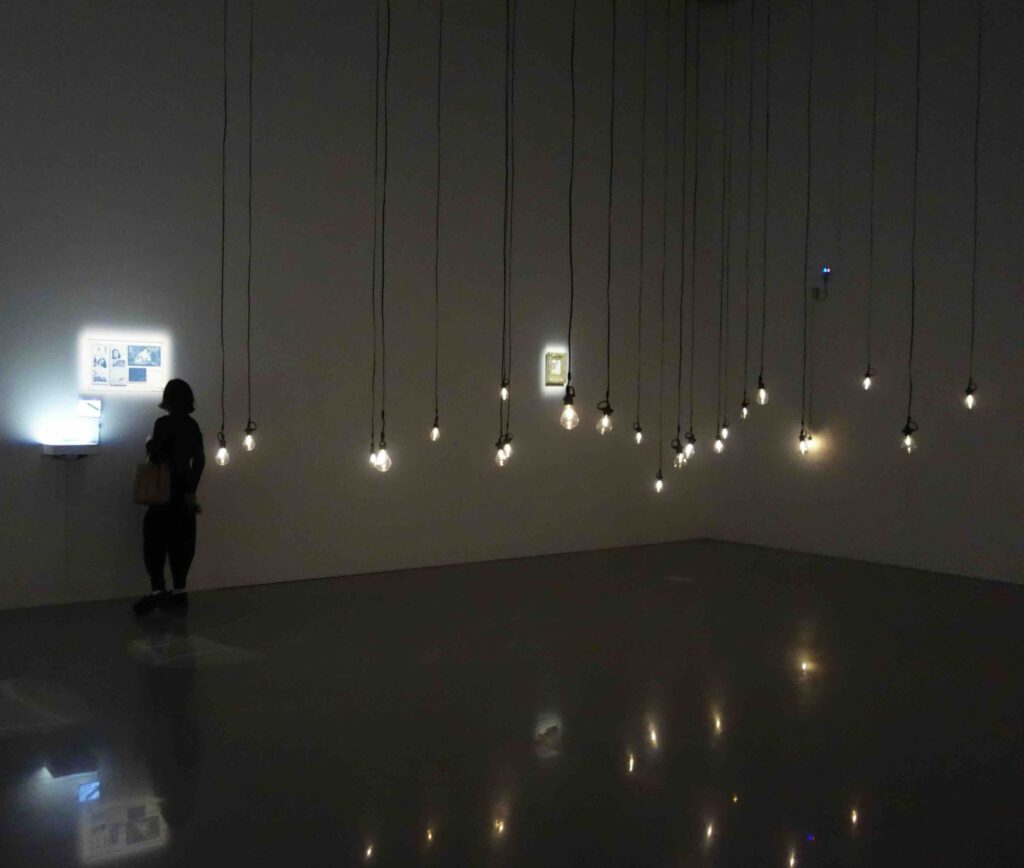
Suzueri: “Along with smoke signals, light is one of the oldest means of communication. In this work, visible light communication is achieved by adding a sound signal directly to the voltage of the LEDs, superimposing the sound on top of the light waveform and transmitting it. Overlaid on each light bulb are lines from movies in which Hedy appeared, her singing voice, news stories about her at the time, interviews and conversations from TV programs, and the sound of songs and interviews with her fellow inventor, George Antheil. Point the receiver at the light and you will hear the voices that once filled the space.”
Suzueri’s conceptual approach lets the visitor pick up a self-made sensor at the venue and point it at a light bulb. Then you can hear an actual recording of that time.
Suzueri: “Inventing things was one of Hedy Lamarr’s hobbies. In addition to her patented secret communication system, she apparently invented a traffic light and a cola tablet among other things. However, none of these things are extant. I attempted to recreate her secret communication system and cola tablet based on existing documents to imagine how the past might have been. First, I used generative AI (Artificial Intelligence) to read Lamarr’s patent applications, magazine articles, and advertisements for her diet and cola tablets. Then I generated images and videos (Luma Dream Machine), which I converted to 3D (Meshy AI) and printed them with a 3D printer.”
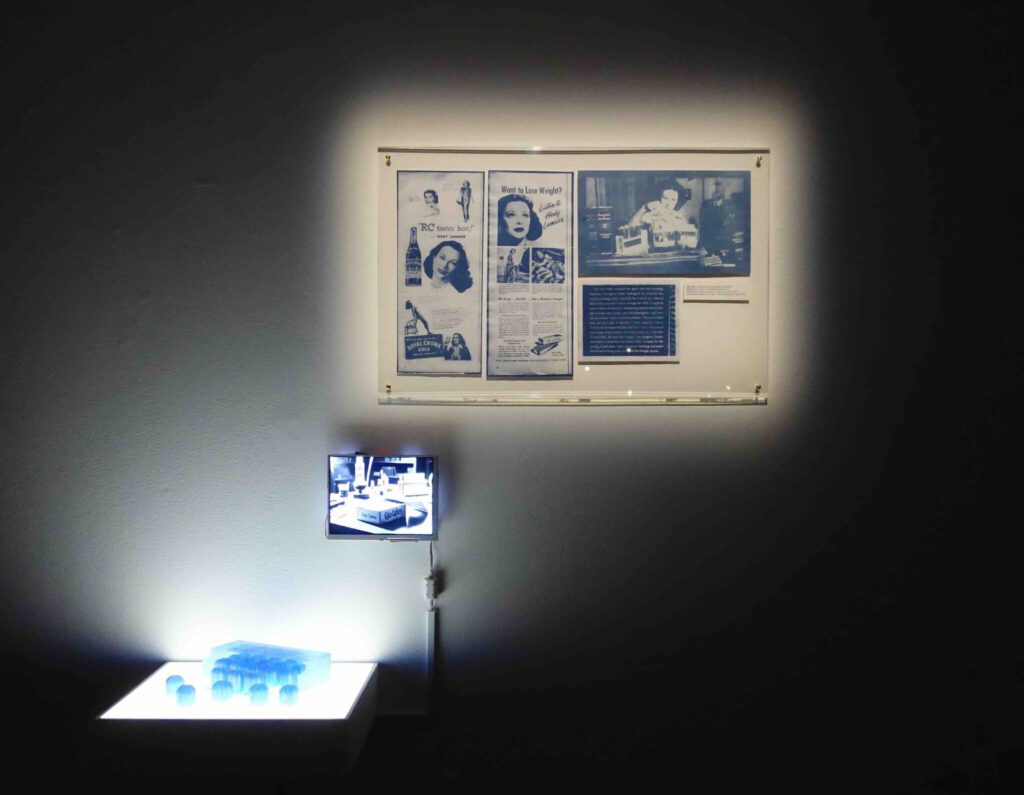

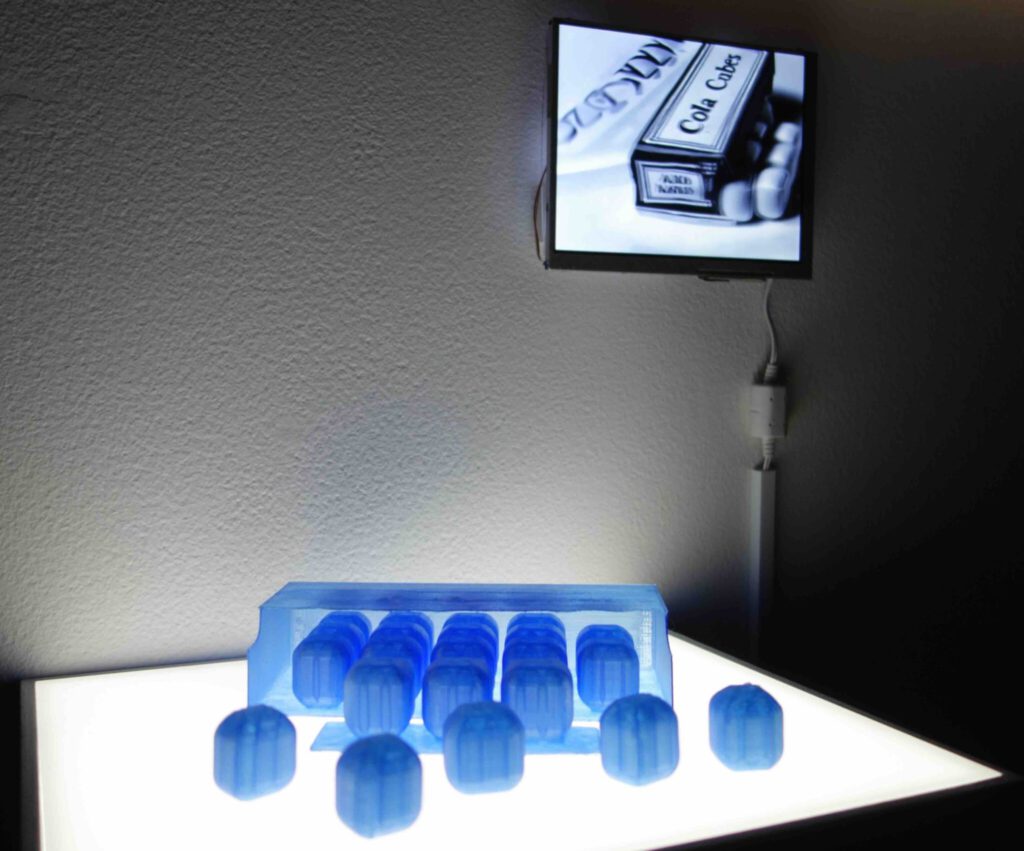
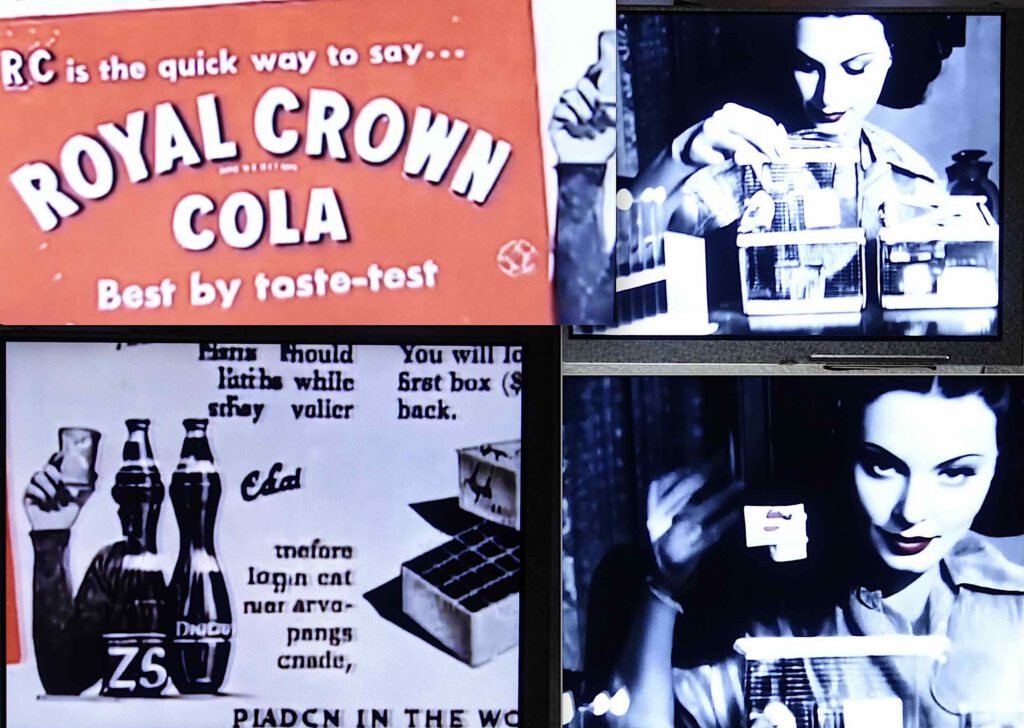
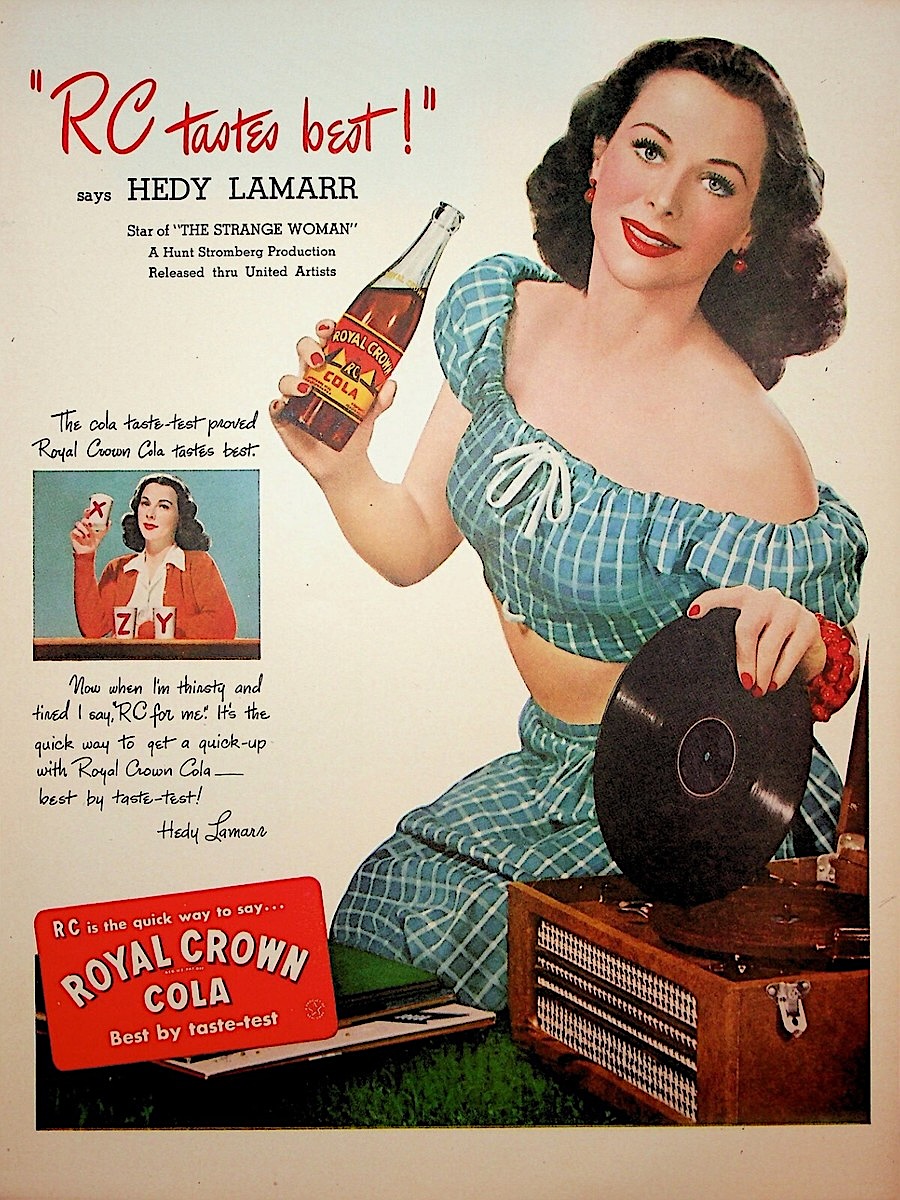
Further on, her exhibition focuses on Lamarr’s turbulent life as an immigrant, too, thus letting the audience learn about history in several time and context layers.
She features installations that connect pianos and light bulbs to communication devices, to reconsider the relationship between society and message correspondence. Suzueri: “In watching Lamarr’s films and reading books about her, I began to notice themes such age, appearance, and social approval – issues that women are inevitably faced with to one degree or another. I was struck by the contrast between the perception of Lamarr as “the most beautiful woman in the world” and her present-day legacy as “the mother of Wi-Fi”.
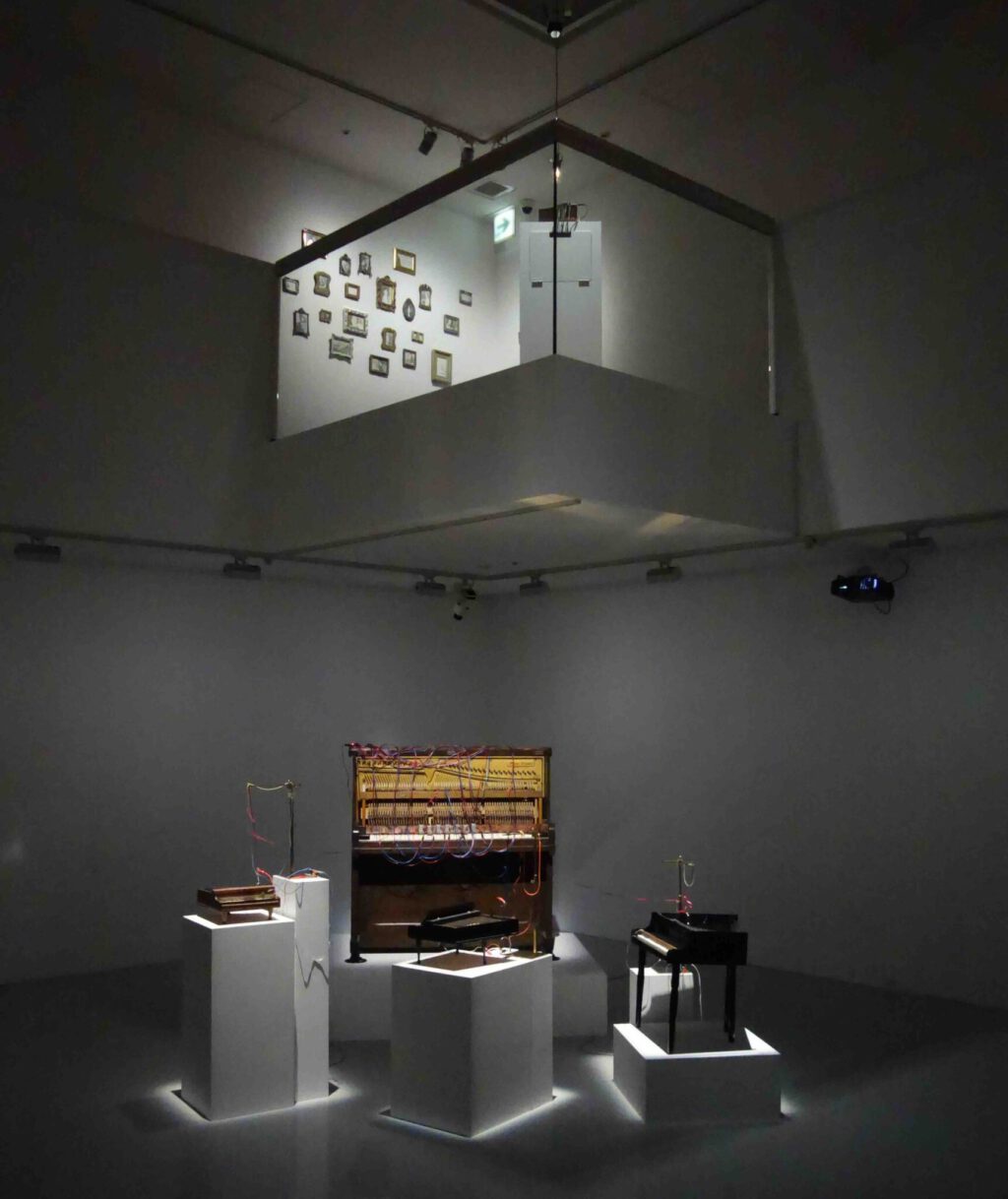
Suzueri: “There are several recordings of Hedy Lamarr speaking on the phone from her later years. In one of them, she is reading Kent M. Keith’s “The Paradoxical Commandments”, a poem that carries a tone of resignation, urging us to love others despite their selfishness. In conjunction with this poem, a toy piano placed upstairs in the exhibition venue communicates with an upright piano downstairs. When the toy piano plays notes corresponding to the letters A through G in the poem, the names of the notes are conveyed downstairs, triggering the upright piano.
This exchange between the pianos occurs via Bluetooth, a communication technology which, like Wi-Fi, was based on Hedy Lamarr’s invention.”
Upstairs, wall: suzueri “Looking for her picture” 2025. Pencil on paper, frame.
Suzueri: “Hedy Lamarr wore many hats – she was an actress and a producer as well as a wife and a mother. She played the piano, invented things, made pictures, and in her later years, became obsessed with plastic surgery.
While I was in New York, I had the chance to see an exhibition about Lamarr’s life. In a quiet corner of the venue, I noticed a picture from her later years. It was made with coloured pencils, and looked like a cross between a flower and a face, exuding a peculiar, almost ominous presence.
The artwork wasn’t included in the exhibition catalogue, and even after searching online, I couldn’t find any trace of it. When I looked at the picture, I felt like I was peering into a deep hole. Since then, I have been searching for her face and pictures.”
A well thought out solo exhibition that superbly resonates the Past and the Now.
Last but not least, let’s read suzueri’s comment on this exhibition:
“Up until now, I have mainly been performing using devices I have made myself. I applied to the Shiseido Gallery because I wanted to think beyond the narrative of the devices I make and the sounds they produce, and I am grateful to have been selected. After some deliberation, I have decided not to reveal my birth year or the year I first graduated from university. I am very happy to have a place in Japan today where I can be appreciated regardless of age, gender, or career, and I am very grateful for the generosity of this place. I am feeling nervous, but I will do my best to create a good exhibition space.”
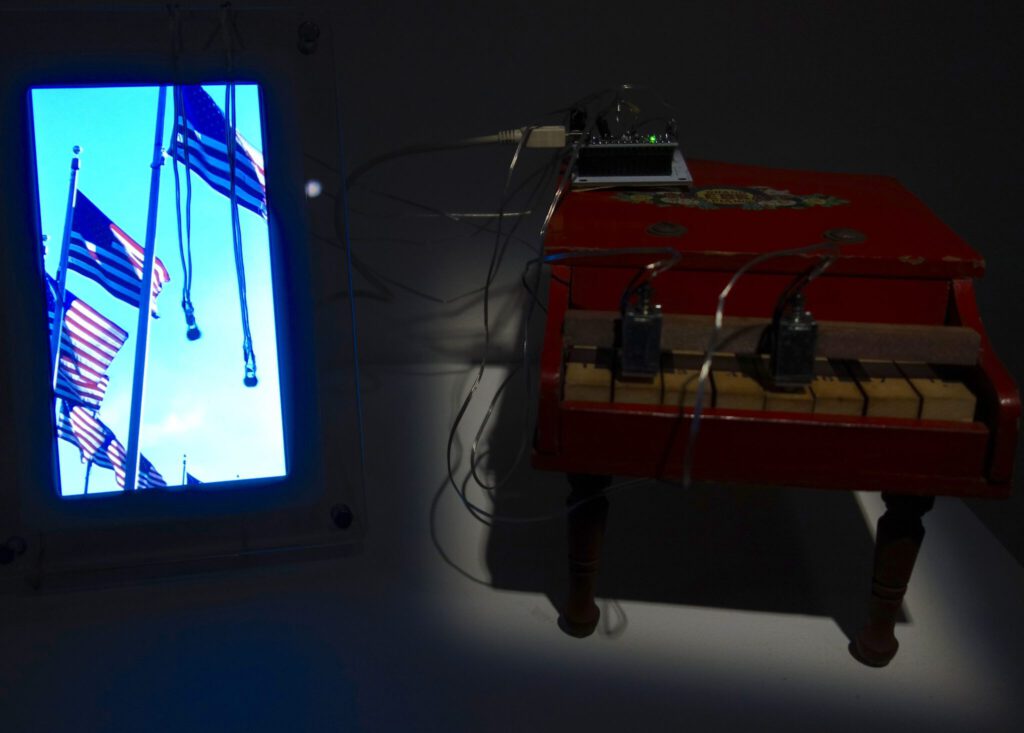
Every art exhibition is met with great expectations from all sides. That’s necessary, given the visitors’ desire for quality and their limited time. Suzueri mastered her solo exhibition at Shiseido Gallery with flying colors, earning her high praise from the Japanese art scene!
Bravissima! A glamorous artist, indeed!
Basel-Tokyo 24th of May, 2025
Mario A
「Any girl can be glamorous」すずえり (鈴木 英倫子) 展
資生堂ギャラリー
2025年4月16日(水)- 5月18日(日)
https://gallery.shiseido.com/jp/
Website by artist suzueri, Elico Suzuki
https://suzueri.org
2025/07/30 Up-date:
🎉 The open-call program hosted by Shiseido to support emerging artists, #shiseidoartegg.
In 2025, the “shiseido art egg Award,” given to the work that most embodies the creation of new value, has been awarded to @suzueri among the three artists: #大東忍, #すずえり, and #平田尚也!
@suzueri @supernovu @_naoya___H__
🎉資生堂が開催する、新進アーティストを応援する公募制プログラム #shiseidoartegg 。
2025 年は #大東忍 、 #すずえり 、#平田尚也 の3名のなかから、新しい価値の創造を最も感じさせた作品に贈る「shiseido art egg 賞」を、すずえりさんに決定しました!
@suzueri @supernovu @_naoya___H__
9:37 AM · Jul 29, 2025
https://x.com/ShiseidoGallery/status/1950098453092032749
リサーチに基づいた通信と社会の関係や、実在人物の生涯をめぐる多様な要素を、高精度で美しいインスタレーションで構成したこと、展示空間の鑑賞者を巻き込みながら、その姿も作品として取り込む試みなど、総合的な完成度が評価されました。
審査員は永山祐子氏、星野太氏、美術家の村山悟郎氏の3名。
Translated from Japanese by Grok
The relationship between communication and society based on research, as well as the diverse elements surrounding the lives of real individuals, were composed into highly precise and beautiful installations, and the attempt to involve the viewers of the exhibition space while incorporating their presence into the artwork itself, were highly evaluated for their overall completeness.
The jury consisted of three members: NAGAYAMA Yuko, HOSHINO Futoshi, and artist MARUYAMA Goro.
https://x.com/ShiseidoGallery/status/1950099071357661299
【速報】 第18回 shiseido art egg賞は、すずえり(鈴木 英倫子)氏に決定いたしました。
https://gallery.shiseido.com/jp/artegg/prize/
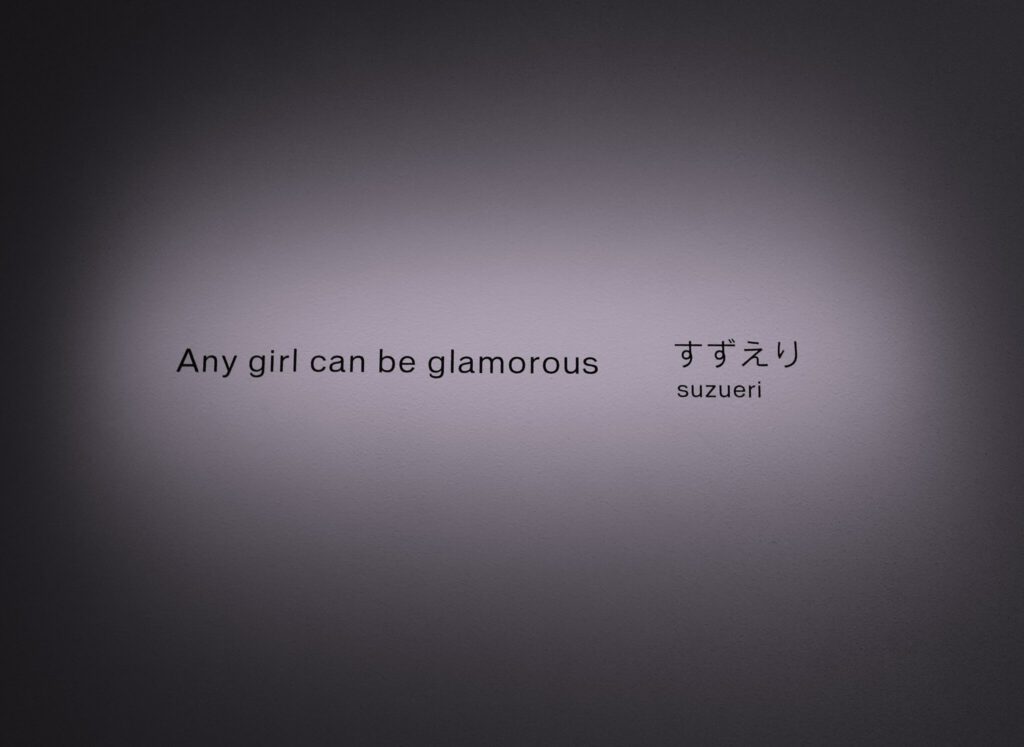

今日のおまけ today’s bonus
